Preview: Theatre Bizarre: The Greatest Masquerade on Earth
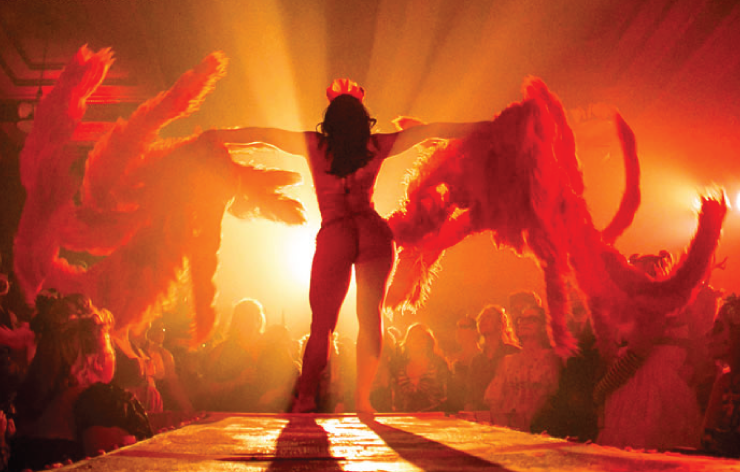
Theatre Bizarre, the "greatest masquerade on earth," returns to the Masonic Temple in Detroit this month for elaborate, extravagant, eerie debauchery. The annual event has grown in size enormously since its origin as essentially a backyard Halloween party 17 years ago and now takes place across eight floors of the Masonic. The brainchild of mastermind John Dunivant, Theatre Bizarre previously took place in an abandoned area near the Michigan State Fairgrounds before being unceremoniously shut down by city officials in 2010 (before that, they’d been kicked out of the Russell Industrial Complex). Now completely legal, the Masonic seems to be the perfect home for the event, and this year, for the first time, organizers have expanded it to take place across two weekends rather than just one.
Part circus, part carnival, part burlesque and fetish show, and part, yes, masquerade, Theatre Bizarre is unlike most parties taking place this time of year. Illusionists, carnival acts, dancers, musicians, and spontaneous theatrics greet attendees around every turn, along with mind-bendingly detailed scenery and exhibitions. Last year, a "Ghost Train," lit by a single strobe light and conducted by a silent masked man, took guests on a careening mini-roller coaster ride around the Masonic's foggy seventh floor, while several floors below, burlesque dancers emerged from the mouth of a giant devil and strutted down a long catwalk. Elsewhere, taxidermy animals held court over long buffet tables, mimes and jugglers moved among the crowd, and acrobats leaped over furniture. The Grand Ballroom is often the largest room at the Bizarre, and in previous years has been filled with an array of carnival games, treat stands and sideshow performances, including an ice cream shop serving Theatre Bizarre-inspired flavors.
Attendees are required to come in costume; in fact, you'll be turned away at the door with no refund if you show up in street clothes. Costumes run the gamut from homemade affairs, cobbled together from secondhand store finds to expensive, custom-ordered creations. You won't find Captain America or Minnie Mouse wandering around Theatre Bizarre either; the emphasis is on costumes that are weird, satanic, sexy, occult, eerie and/or decadent.
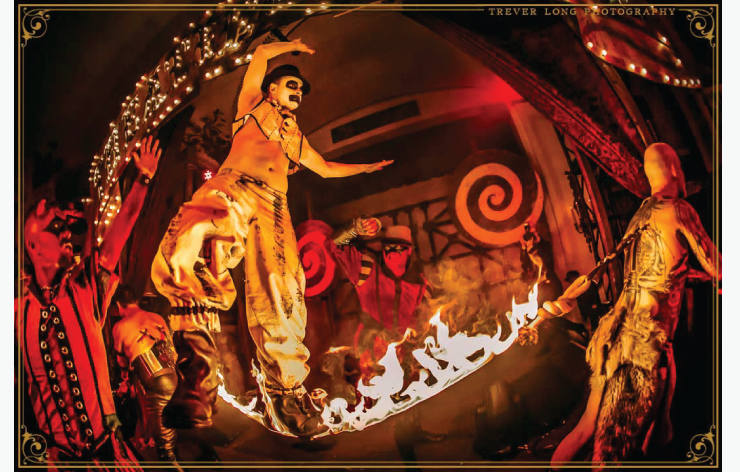
There are four separate Theatre Bizarre events this year, two Gala Masquerades on Fridays and two Historic Theatre Bizarres on Saturdays. The more expensive Gala Masquerade is a formal masquerade ball with a maximum attendance of only 450 people. Dinner and drinks are included in the ticket price, and formal attire, along with masks that conceal one's identity are a must. Guests can enjoy a cocktail reception, strolling dinner, pockets of entertainment around the Masonic, and dancing. The main Theatre Bizarre event takes place on Saturdays, and is less formal, although many still include masks in their costumes. This event is much larger, with attendance pushing 2,000, 5 separate main stages, and 20 performance areas, all of which remain active until the event closes at 4 am.
Theatre Bizarre is particularly unique for its lack of corporate sponsors. Dunivant and those he works with to create the event are artists, and don’t want logos interrupting the world they create or jolting visitors back to reality. Putting the event on at the Masonic is no easy feat: not only do sets and architectural features need to be built elsewhere and reassembled on site, but the wiring in the building is so old that Dunivant and his co-creators run the risk of frying it if they used it to support the electrical demands of the show. Instead, cables and wiring—thousands of feet of them—have to be routed through back hallways, walls, and vents. But Dunivant keeps making it happen every year, and hundreds of devoted attendees are glad. Still, who knows how much longer they’ll be able to pull off this outrageous event, so if there’s ever a year to go experience the magic, this is surely it.
Elizabeth Pearce is a Library Technician at the Ann Arbor District Library. She is super excited to wear a giant horned headdress to Theatre Bizarre this year.
Theatre Bizarre takes place October 14-15 and October 21-22 at the Masonic Temple in Detroit. Tickets range from $95-$260 and can be purchased online, where you can also find out more information about the event.
Overview: Pop-X 2016

It may sound like lofty praise, but it’s becoming readily apparent that POP•X is one of the most important events on the contemporary Ann Arbor visual arts calendar. It’s a curious blend of some of our most talented arts groups and individual artists tacitly stepping out of their comfort zone.
The polish and professionalism on display in the installation site was POP•X 2016’s conventional strength—and its non-conformity was the fact that the event took place at all. While this seeming contradiction may be paradoxical to some, it follows seamlessly (perhaps even providentially) from a trajectory that fits the mood of our time.
For the fact is: POP•X fills a gap in our local visual arts that’s been all-too-lacking for some time on our arts calendar. Tucked nicely in downtown’s Liberty Plaza, the installation site was as tidy and manageable as an arts event could be in contrast to the overwhelming behemoth that annually invades Ann Arbor over the course of a week in July. That massive congregation may be ostensibly devoted to the arts, but it’s not really about art. Rather it’s a merchandizing juggernaut that allows the entire community to celebrate the idea of art.
By contrast, POP•X 2016 is a different thing altogether. It partakes of the slightly off-kilter vibe of the mid-20th century “happening.” Granted, it’s far tamer than the Allan Kaprow inspired performance art which sought to perplex as much as it meant to elucidate. But then again, everything slows down as it matures.
There’s instead a touch of the provocateur in POP•X 2016. And the art is of sufficient quality as to gently mask this tension. Instead, as would have been noted by the countercultural Fluxus group of this same mid-20th century period, it’s the sheer concreteness of POP•X that democratizes the activity. There’s no artificial boundary to the event (outside of its physical boundary) because the only border to POP•X 2016 is territorial and this is a logistical distinction.
Whether referencing Kaprow’s performance art or Fluxus’ abstraction, it was one of Neo-Dada's conceits that art be taken off the wall—Pop Art, Environmental Art, Conceptual Art, Optical Art, and other likeminded art forms of this stripe—sought to reinterpret the concept of art altogether. Yet one of the aesthetic ironies of Modernism was that even these kinds of art were still typically found confined to the gallery setting with all the expectations of such pretensions.
Let’s just suffice to say POP•X 2016 bursts though the aesthetic fourth wall of the gallery mentality by gleefully setting up shop outdoors and letting the setting itself serve its basis. But the conventionality of the “art” market has also restricted the possibilities of democratizing the aesthetic potential.
By contrast, POP•X effectively uses the conventions of art to work in an allied configuration that expands these possibilities. Indeed, it’s likely (on the presumption that Ann Arbor is wise enough to continue in this vein) that the possibilities of POP•X have not really yet been broached.
If only for the reasons mentioned above: There’s a homey feel to the POP•X 2016 spirit that’s channeled through the professionalism of the artists and art groups on display. The impulse is clearly there: For example, Lisa Waud’s incarnation of her Detroit-based Flower House utilized her installation to craft a display of nature that threatened to burst from its confine. And although it was based on the limitation of its video monitors, there is a remarkable amount of possible expansion in Donald Harrison and Martin Thoburn’s invigorating four-channel installation roaming Ann Arbor from each direction via its Liberty Plaza starting point.
Effectively—and, again, presuming our arts community is wise enough to build on this remarkably dexterous POP•X format—we still haven’t seen what POP•X 2016 can really be. The possibilities are there; just as the evolution of the village lies in the flexibility of the pavilion format. And this is the most exciting—as well as most important—element of the format.
As is evident from other places and events, contemporary art is clearly reconsidering itself at this time through the adventurousness of its practitioners. It was most evident in the mid-to-late 20th century through the reincarnation of ceramics, fabrics, and functional design.
This is the fundamental and continual challenge of all aesthetics. And POP•X is on the vanguard of this most recent artful transition. So the only real question then is what this change can be?
Because if POP•X 2106 is any indication, we don’t really know yet. For it’ll be the task of our local artists and arts groups as well as visionaries like the Ann Arbor Art Center’s Omari Rush to nurture the concept through its possible growth.
Rather than hope that we see a POP•X again—think in terms of how we see it again. For this is the test of the visual arts.
John Carlos Cantú has written on our community's visual arts in a number of different periodicals.
POP•X is an annual ten-day festival presented by the Ann Arbor Art Center. POP•X 2016 was Thursday, September 22 through Saturday October 1, 2016 from noon to 8pm at Liberty Plaza Park, 255 East Liberty St, Ann Arbor. To learn more visit popxannarbor.com or the POP•X Facebook event page. POP•X is free and open to the public.
Review: The Purple Rose's Morning After Grace Is a Hilarious and Sensitive Comic Drama

Growing old can be hell but it can also be hilarious as proven by the Purple Rose Theatre Company’s World Premiere presentation of playwright Carey Crim’s Morning After Grace.
Crim’s meditation on aging, marriage and sexual frustration is in the superb hands of director Guy Sanville. A three-actor cast handles the unforced and sparkling humor with the precision of a well-disciplined string quartet while also letting it all out when the humor turns to a cathartic sadness.
The scene is a wealthy retirement community on Amelia Island, Florida. An older but still handsome man stumbles from his bedroom into his living room with all the evidence of a head-splitting hangover. He plops on a couch with a look of bewildered exhaustion and falls into a light sleep. Suddenly, a head pops out from a tangled comforter. A woman’s face peeks out and a giddy, happy grin spreads across her face.
In this small opening we immediately understand the dynamic that will play out in Crim’s play. These two characters were strangers to each other just a day before. They’ve had a night at the man’s condominium. Their very different personalities will delight, challenge and comfort each other over a momentous morning.
The title is a pun. Grace refers both to the religious meaning of divine favor but it also refers to the man’s now-deceased wife, whose funeral is the catalyst for what ensues. In this production, it also could refer to the grace and style of the three performers.
Michelle Mountain is Abigail. Her beaming entrance is a clue to Abigail’s attempts to keep a happy mood as she navigates her way through her mid-60s after a divorce. Mountain is a gifted actress. She is as adept at physical comedy, which she demonstrates with some creative costume changes, as she is with fast repartee. She has an expressive face that can light up with delight and also display deep sympathy. Her Abigail seems to have it all together as a professional grief counselor until bit by bit we learn of her insecurity. But she’s an optimist and sweet-natured, a perfect foil to the stranger she went home with.
Randolph Mantooth is Angus, Abigail’s emotional opposite. He’s a young-looking 70-year-old with some unsettled business with his late wife. But he has long been a taciturn, cynical and angry man. This comes through in some sharp barbs that Mantooth delivers with droll precision. Mantooth’s gruff demeanor has a shaggy dog quality that promises that his bark in worse than his bite, even when things get a bit rough. He seems to be getting the upper hand in his byplay with Abigail, but things take an unusual turn.
Ollie enters the scene. Ollie is another resident at the community. He’s a 66-year-old former Detroit Tiger and Grace’s friend. Played by Lynch Travis, a big man who brings big warmth to the character of Ollie, he could seem menacing, but is really gentle, big-hearted and struggling with issues of his own.
Sanville has a deft touch with comedy. He never allows his actors to overplay or get out of character for the purpose of drawing a bigger laugh. This is comedy rooted in reality. These three fine actors bounce lines off each other that are often roaringly funny but are never delivered as jokes. Crim’s comedy emerges from the characters she has created not from a standard joke book.
It would be unfair to those planning to see the production to say more about the plot, but the story has several amusing revelations that twist the perspective on what we’re seeing. As we begin to understand what has gone wrong with Angus’ marriage, comedy gives way to some agonizing self-reflection and real moments of despair. Mantooth makes these moments chillingly real.
Just as the comedy itself is rooted in the real world, Sanville and set designer Bartley H. Bauer have opted to create a stunningly realistic upscale Florida condo, complete with a state of the art kitchen, which plays a major role in the play. This works well as it makes voyeurs of the audience, giving the sense that we are really there is someone’s apartment watching these three lives entangle.
Crim has premiered five plays at the Purple Rose and has a booming career on regional and Broadway stages. This is an excellent addition to those successes. She’s a witty, subtle but also deeply sensitive playwright. She explores in the real context of this play some serious issues facing older people and she brings true compassion to the questions raised. The play should get produced at many other theaters in the future.
This is a winner for the Purple Rose, a fine play with a superb cast.
Hugh Gallagher has written theater and film reviews over a 40-year newspaper career and was most recently managing editor of the Observer & Eccentric Newspapers in suburban Detroit.
Regular performances of Morning After Grace are Thursdays-Saturdays at 8 pm, with 3 pm matinees Wednesday and Saturdays and 2 pm matinees Sundays through Dec. 17 at the Purple Rose, 137 Park St., Chelsea. For more information or to make reservations, call the Purple Rose box office at (734)433-7673 or visit them online.
Preview: Kevin Smokler's "Brat Pack America" book release party with Michigan Theater double feature, "Ferris Bueller's Day Off" and "The Breakfast Club"

Writer/journalist Kevin Smokler grew up watching ‘80s teen movies in Ann Arbor, and he’ll be doing that again in the coming weeks, since the release of his new book, Brat Pack America: Visiting Cult Movies of the ‘80s, inspired the Michigan Theater’s fall film series, "Kids in America: '80s Teen Classics" which kicks off on Monday, October 10 with a double feature: Ferris Bueller’s Day Off at 7 pm and The Breakfast Club at 9:30. Smokler will be in attendance, as will director John Hughes’ son, James Hughes, and both will offer their insights about the films.
“I knew I wanted to write about the movies I grew up with, but I knew I had to find something else to say about them,” said Smokler, a Greenhills School grad who now lives in San Francisco.
As Smokler started revisiting beloved movies from his youth, he noticed that they were consistently set in places that weren’t Los Angeles or New York City, but rather fictional towns like Shermer, Illinois, or the suburbs of the San Fernando Valley, or the Midwestern city of Chicago. Locations played a key role in these films, so in addition to talking to actors, writers, and directors, Smokler went on ‘80s teen movie pilgrimages to Goonies Day in Astoria, Oregon, a Lost Boys Tour in Santa Cruz, California and more.
Fittingly, Smokler views the book as a “giant Trapper Keeper of trivia” about these movies, and one of the interviews he most anticipated was with director Amy Heckerling (Fast Times at Ridgemont High, Clueless). “She’s responsible for two of the most important teen movies of all time,” said Smokler. “I was pretty worried about what I could ask her without collapsing into a Spicoli/Cher Horowitz quote-a-thon, which I’m sure she’s heard a thousand times and didn’t need me wasting her time with.”
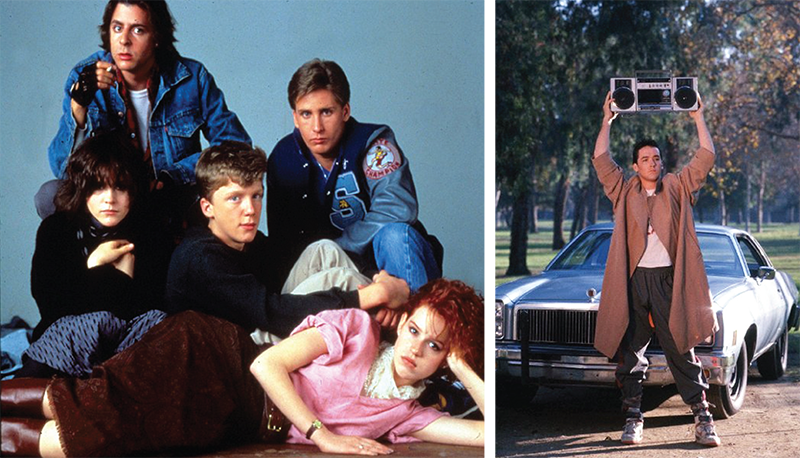
Of course, watching movies you loved as a kid when you’re an adult can sometimes be a sobering experience, and not everything held up well. “I’d liked Adventures in Babysitting, and that might have been because I had a crush on Elizabeth Shue, or because we would sometimes drive to Chicago for a Blackhawks game, but God, is that an appallingly racist movie,” said Smokler. “ … And The Outsiders is still a good movie. It’s just beneath the skill level of a director like (Francis Ford) Coppola. S.E. Hinton, at 17, somehow wrote a book that’s more cogent and stronger thann Coppola could make it as a movie at 40. I just think the movie coasts on the collective talent of the people who made it.”
Some movies, though, hold up or even improve when viewed from adulthood. For Smokler, this category included Fame and the Matthew Broderick teen tech drama, WarGames. “WarGames is surprisingly sophisticated for what is a political thriller, more in the tradition of The Parallax View,” said Smokler. “It also has a great cast. There’s something special about that, too.”
But you can’t write about ‘80s teen movies without discussing director John Hughes (Ferris Bueller’s Day Off, Pretty in Pink, 16 Candles, The Breakfast Club). “He did not stretch himself much,” said Smokler. “He was a miniaturist of sorts. He was a vertical filmmaker, in that he drilled down on what he did very deeply. … A journalist friend of mine had gone to a gifted and talented school for black teens in Bethesda, and he loved The Breakfast Club, but he was also aware that this was a white person’s fantasy. The same with Star Wars. … The thing that’s so complex about Hughes’ legacy is that he painted with a small palette of colors but his stories registered as universal. It’s both an achievement and troubling at the same time.”
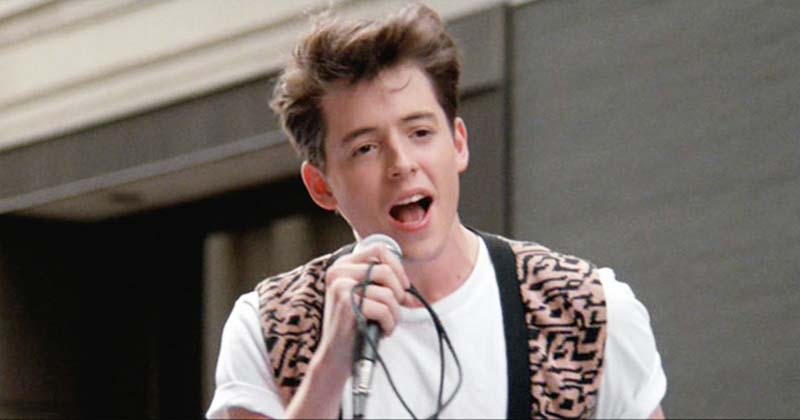
While working on the book, Smokler watched more than 50 films (about 40 get discussed in Brat Pack America), at the pace of usually 4-5 a week. Once Smokler defined what made something a “teen” movie, he also determined where the film era started (Breaking Away).
“Heathers is the movie that literally blows up the genre,” said Smokler. “It’s designed as a satire of the genre, and that how you know that a genre’s time has passed. … Heathers predicts grunge and Quinten Tarantino and feel more ‘90s than it does ‘80s.”
But Smokler believes that the cinematic family line from ‘80s teen movies continues in the form of movie adaptations of John Green’s work (The Fault in our Stars, Paper Towns), The Perks of Being a Wallflower, Superbad, Me & Earl & the Dying Girl and more.
Even so, Smokler’s book invites readers to take another, closer look at the originals, which will be all the easier due to the Michigan Theater’s series, which includes Pretty in Pink, Adventures in Babysitting, The Lost Boys, Say Anything, Back to the Future, Fast Times at Ridgemont High and WarGames.
“I didn’t have as big of an idea as they did,” said Smokler, referring to the Michigan Theater’s staff. “ … I’d dropped Russ (Collins, Michigan Theater executive director and CEO) a note saying, ‘I’ve got a book coming out, and I’m from Ann Arbor.’ And he said, ‘We don’t have an idea yet for a fall film series.’ … At age 7, I sat in that theater’s balcony and watched things like, The Wizard of Oz. It’s the fulfillment of a dream to appear at the Michigan now as a working artist.”
Jenn McKee is a former staff arts reporter for The Ann Arbor News, where she primarily covered theater and film events, and also wrote general features and occasional articles on books and music.
Michigan Theater’s fall film series, "Kids in America: '80s Teen Classics" runs through December 8.
Review: U-M’s Ah, Wilderness! Offers Solid but Stiff Effort in O’Neill Comedy
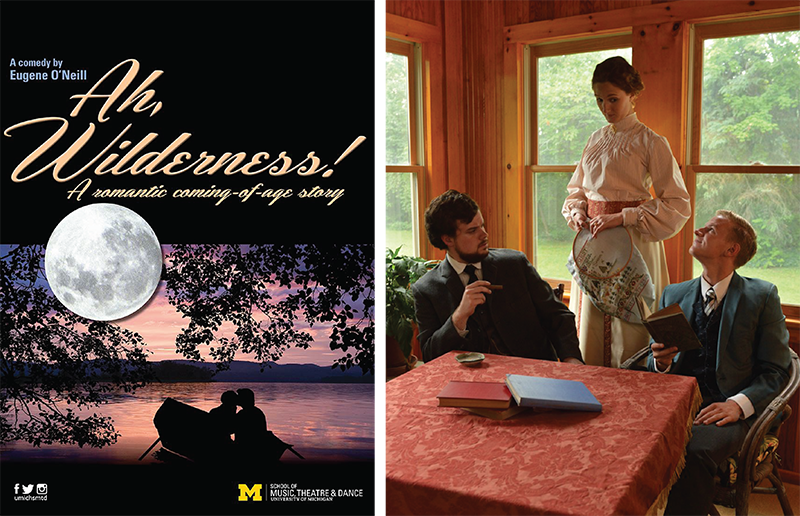
Ah, Wilderness! is an outlier among Eugene O’Neill’s plays, usually full of painful truth telling. It’s a summertime comedy, nostalgic for the youth the playwright never had. Its humor is soft and warm but it is also a quiet reflection on the limits of freedom, set appropriately on the Fourth of July.
The play offers two challenges to a university theater company. It is set in 1906, a time that O’Neill romanticizes as a period of innocence and propriety under assault, a time far removed from now. It is also a family play, in which most of the characters are younger or quite a bit older than the student actors.
The University of Michigan School of Music, Theatre and Dance cast under the direction of John Neville-Andrews tries hard to create a semblance of an early 20th century family but seems stiff, corseted in their roles and their interplay with each other. This play depends on that interplay, but in this production only a few scenes capture what O’Neill was about.
The Millers of a “large small town” in Connecticut are a solidly middle class clan. Father Nat is the owner of the local newspaper, his wife, Essie, is the dominant figure at home and a stickler for moral values. They have four children, Arthur, a Yale student; Mildred, a modern young woman; Richard, an emerging firebrand; and young Tommy, a firecracker in more ways than one.
Richard is the central character here. He’s a young man intoxicated by new, revolutionary ideas. He’s hiding his copies of Oscar Wilde, Bernard Shaw, Algernon Swinburne and Omar Khayyam. He’s also intoxicated with a girl named Muriel and trying out all he’s learned on her innocent person.
Another main character is Essie’s brother Sid. Uncle Sid is a cautionary tale, an alcoholic with a good heart and a crippling weakness. Sid is the object of Nat’s sister Lily’s affection and deep disappointment.
The Fourth is a holiday dedicated to celebrating a revolution and the ideas it helped take hold. But Richard is a classic naïf, a 16-year-old boy anxious to get on with becoming a man and ready to take that first step into naughty rebellion.
This production never settles into a comfortable give and take. The actors seem too often to be reciting and moving stiffly about. The gentle humor is often lost and the humor that is meant to be forced and awkward is never separated from all the rest. The actors seem to have trouble playing the middle aged characters authentically and fall back on stiff mannerisms of an earlier time. But there are good moments and solid effort.
Kevin Corbett gives Richard Miller the right amount of "gee whiz" enthusiasm for the swirl of ideas in his head and he has some good comic moments as he goes to the “dark side” in his encounter with a brassy lady of the night. But even he doesn’t quite capture the giddiness and fear of a boy on the cusp of manhood.
Larissa Marten has every bit the look of a strong matriarch as Essie. She’s tall with an attractive face made stern from admonishing her children. She also has a commanding voice. But her performance is stiff, missing the humor intended under what she says and posing too often. Essie is more than she seems as we see later in the play, but we get few suggestions of that early on.
Liam Loomer brings honest warmth to the role of Nat. He struggles to relax into a real middle-aged man and is forced into playing with cigars and pipes and too much joie de vivre. He does a fine bit of physical comedy in a scene with Corbett where he struggles to explain the “facts of life.” Loomer also has an uncanny resemblance to a young Orson Welles.
Oren Steiner probably has the hardest role in the play as Uncle Sid. Sid is a one-time valued newspaper reporter brought down by a weakness for alcohol. Despite his weakness, Sid is a lovable drunk, not the usual mess found in other O’Neill plays. Steiner does a good job of melding the two sides of Sid and brings some sweet interplay with his nephew Richard after Richard’s night out. But a lot of the humor that is sad/funny about Uncle Sid doesn’t come through and seems, again, stiff and labored.
Amy Aaron as the long-suffering Lily is fairly convincing but looks far too young for the part and lacks the nervousness that seems intended in a character defined as “poor spinster” forced to take shelter in her brother’s house while pining for desolate Sid.
Juliana Tassos plays the brassy prostitute with a nod to Mae West and a squawky voice. Morgan Waggoner is the ethereal Muriel. She gets the tension between desire and rectitude as the play becomes a poetic valentine.
A couple actors seem a bit more relaxed in their performances. Sarah Prendergast plays sister Mildred with a breezy good humor and no posed mannerisms. Eddie Williams as a shifty bartender is also natural as he seems to glide across the barroom.
Ah, Wilderness! was a sweet spot to which O’Neill never ventured again. His family plays in the future would be dark and brooding and even more revolutionary than Wilde, Shaw or Omar Khayyam. But even here he raised some real issues about the limits of freedom and the value of restraint when it comes in the warm embrace of a loving and upright family.
Hugh Gallagher has written theater and film reviews over a 40-year newspaper career and was most recently managing editor of the Observer & Eccentric Newspapers in suburban Detroit.
Ah, Wilderness! continues at the Arthur Miller Theatre on the North Campus of the University of Michigan at 7:30 p.m. Oct. 13, 8 p.m. Oct. 7,8,14 and 15 and 2 p.m. Oct. 9 and 16. For tickets, call (734)764-2538, go online to tickets.music.umich.edu or in person at the League Ticket Office in the Michigan League building at Fletcher and N. University.
Preview: Redbud Productions Presents 'Good People'
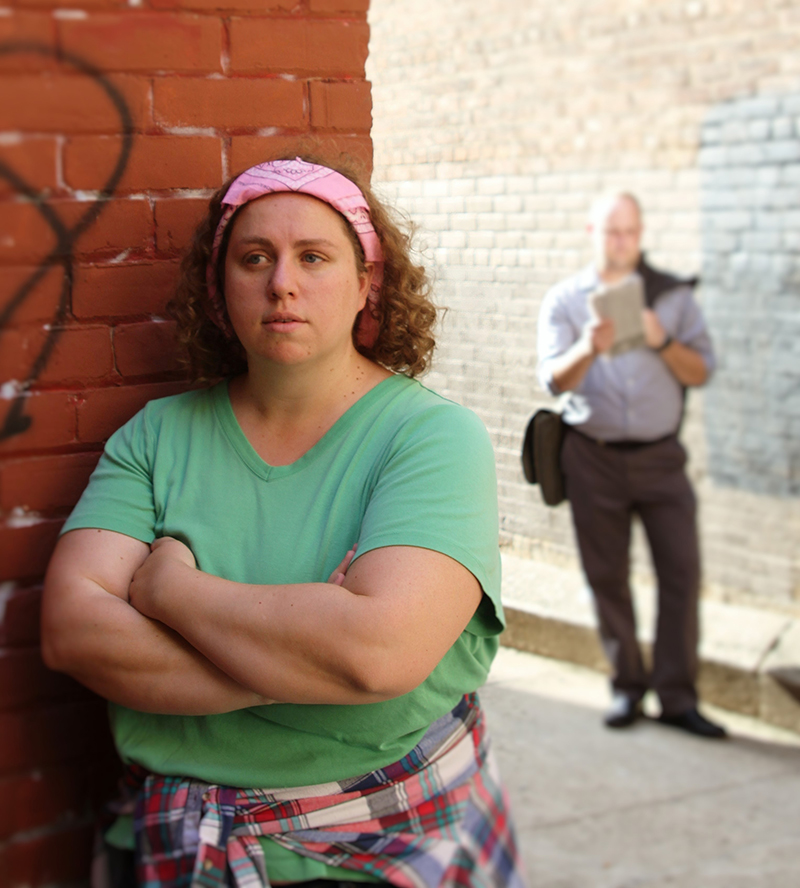
Redbud Productions celebrates its 18th year with the Tony-nominated comedy/drama Good People, a delightful play named Best Play of the Year by the New York Drama Critics’ Circle. From the writer of the Pulitzer Prize-Winning Rabbit Hole, David Lindsay-Abaire, Good People explores the struggles, shifting loyalties, and unshakable hopes that come with having next to nothing in America.
Welcome to Southie, the Boston neighborhood where a night on the town means a few rounds of bingo; where this month’s paycheck covers last month’s bills, and where Margie Walsh (Katie Whitney) has just been fired from yet another job.
Facing eviction from her eccentric landlady (Linda Lee Austin) and scrambling to catch a break, Margie, on the advice of her best friend (Emily Rogers), approaches her former boyfriend (Dave Barker), now a wealthy doctor, in hopes that he is her ticket to a fresh new start. Will this self-made man face his humble beginnings? Margie risks what little she has left to find out.
David Lindsay-Abaire’s play Rabbit Hole was honored with the Pulitzer Prize for Drama, five Tony Award nominations, and the Spirit of America Award. Good People premiered on Broadway and received two Tony Award nominations and the New York Drama Critics Circle Award for Best Play of the Year.
“Good People maps the fault lines of social class with a rare acuity of perception while also packing a substantial emotional wallop.” - Boston Globe “A wonderful new play … poignant, brave and almost subversive in its focus on what it really means to be down on your luck” - The New York Post
Amy Cantú is a Production Librarian at the Ann Arbor District Library.
Good People runs October 13-15 at the Kerrytown Concert House, 415 North Fourth Avenue, Ann Arbor. General Seating Tickets - $20 for adults; $15 for students (limited front row café table seating for groups of 2 - 3 for $25 a seat. For reservations, call Kerrytown Concert House at 734-769-2999 or visit http://kerrytownconcerthouse.com.
Preview: Katie Geddes Serves Music Community On Several Levels

There are many musicians, promoters, and support staff who thrive on service to the community. They tirelessly and with inadequate recompense give of themselves for the greater musical good. Then there’s Katie Geddes, who fills that bill beyond the call of duty.
A premier singer in our midst for some three decades, Geddes (pron: Ged-us) makes appearances at The Ark, the Green Wood Coffee House, smaller clubs, nursing and direct care facilities, the occasional festival, and even hosts house concerts. Her profession as a financial planner feeds her monetarily enough to be able to take music and acoustic folk art to as high a level as any local musician.
She also programs the shows at the Green Wood Coffee House in the First United Methodist Church at Green Road on Ann Arbor’s near north side. The series has been active since 1995. Recent performers have or will include Melanie (which was sold out), Chuck Mitchell, Don Henry, Mary McCaslin, Chuck Brodsky, Lou & Peter Berryman, Don White & Christine Lavin, John Ford Coley, Laurie McClain, Jeremy Horn, Sally Barris, and of course Geddes. In a room capacity of 200, most patrons hearing big name folk acts while not being church parishioners, is impressive.
We have breaking news: Katie Geddes has plans to record as many as six new CDs in the coming years. One will feature Melanie singing on it and producing it; as well as a tribute to Carly Simon. “I can’t believe no one has done that," she said in a recent interview. “Don Henry will produce that one.”
She’ll also do a solo album, another alongside her vocal trio All About Eve, plus a gospel, and a Christmas album. Whatever project she finishes first will be released first. She hopes all will be done in the next several years. “I would like to think so, but it takes me a long time because music is my side project.” When asked if she is a perfectionist she says no. “I do things over, but the time that goes between my recording sessions might be six months. David Mosher is very patient with me. He keeps my hard drive right there in his studios so when I do show up he’s ready."
Her debut studio CD We Are Each Others Angels was issued in 2010 and was made at Mosher’s Lake Studios in Brighton and Big Sky in Ann Arbor. The Live At Green Wood with The Usual Suspects dates back to 1999. It’s safe to say these new ideas have had plenty of time to germinate and now they are getting ready to sprout wings.
Because of the specific use of guest artists, most times Geddes has to wait until they come to town to book them at Green Wood. Her personal producer is a constant. “Now David Mosher is a wizard on all different kind of instruments, so I would lay down vocals and he would record a mandolin or a fiddle, then I’ll decide whether to keep it or not. The one I’m doing now has Robin McNamara, then a good two years later Jonathan Edwards added harmonica. That’s how I work.”
The guest artists become friends through her booking them at Green Wood. She also interprets other folks' music exclusively. “I do no song writing. I did write a book of poetry that maybe someday someone will put to music. They’re not really formatted."
“I cover songs and I think I'm pretty good at choosing songs and interpreting them. I like to ‘folkify’ pop - I’m a big fan of 1970s radio pop. I’ll countrify it or add a yodel, or harmony where there was not one before. By chance I’ll hear something I haven’t heard in forever and it’ll be stuck in my and really need to redo it. Or we’ll do something in church like Joe South’s 'Games People Play' because it was perfect for the service that day. It’s very relevant. We used Hammond organ on that.”
Some of the artists songs she has covered include Nanci Griffin, Gillian Welch, Woody Guthrie, Leadbelly, J.D Souther, John Lennon & Paul McCartney, and John Prine.
She mentions songs in church done by Mary Gauthier or Susan Werner, emphasizing the lack of hymns or strictly spiritual music. "We don’t do church music at our church.” As far as dream artists to book or collaborate with, she listed Sweethearts Of The Rodeo, Jennifer Warnes, and Dion.
Then there was the sold out show in the late 2000s with the recently deceased Rod McKuen. “We knew ahead of time we would have had too many people for the room so we put it in our downtown location. His fans had been waiting decades to see him. They came from all over the country."
Michael G. Nastos is known as a veteran radio broadcaster, local music journalist, and event promoter/producer. He is a former music director and current super sub on 88.3 WCBN-FM Ann Arbor, founding member of SEMJA, the Southeastern Michigan Jazz Association, Board of Directors member of the Michigan Jazz Festival, votes in the annual Detroit Music Awards and Down Beat Magazine, NPR Music and El Intruso Critics Polls, and writes monthly for Hot House Magazine in New York City.
Katie Geddes performs at 8 pm, Saturday, October 8, at the Interfaith Center For Spiritual Growth in Café 704, 704 Airport Blvd. off State St. For reservations e-mail Al Carter at cafe704@gmail.com or call (734) 327-0270.
Designer Aaron Draplin brings Portland style to Ann Arbor

Fresh off his appearance at this year’s TEDxDetroit conference, prolific graphic designer (and Michigan native!) Aaron James Draplin will be bringing his powerhouse personality to the downtown Ann Arbor District Library on Friday, October 7, for a special mid-day talk that will start at 12:30pm.
Draplin’s passion for creating “good work for good people” combined with his bold independence is infectious and inspiring. You may have seen his work in any variety of short videos posted in recent years, like this logo design challenge (Vectors are free!), or his Skillshare classes, or his fantastic critiques of signage and design.
Based in Portland, Oregon, Aaron has been the sole proprietor of the Draplin Design Company since 2004. His clients range the full gamut from friends selling hot dogs (Cobra Dogs), Nike, Burton Snowboards, Esquire, Red Wing, Ford Motor Company, and the U.S. Government / Obama administration’s 2009 American Recovery and Reinvestment Act and the USDOT TIGER program.
In addition to his client work, he has generated a massive amount of “merch” in his personal projects including retro-inspired Space Shuttle posters, “thick lines” posters, and “Things We Love” State posters. His collaboration with Jim Coudal produced the well-known Field Notes brand, inspired by the kinds of memo books used by farmers (and a product of his passion for “goin’ junkin’” and “rescuing stuff”).
Expect some robust storytelling about his career and the creation of his first book, Draplin Design Co.: Pretty Much Everything. From the contracts to the scheming, from the pagination to the design, from the tears to the nightmares, he’ll tell you what it’s like to cram your whole half-wit design career into 256 pages and live to tell the tale. He'll pack in stories from the run-up, release, and surreal fallout, as well as updates to other tricky ventures the DDC has been up to.
After Aaron’s whirlwind mini-tour of Southeast Michigan, he will be embarking on a national book tour in support of the book. Pretty Much Everything is a jam-packed, in-your-face retrospective of his work so far, including drawings that give insight into his inspiration and process. In addition to the work itself, you get stories, commentary, and priceless advice in Aaron’s distinctive voice about what drives him and his work. It’s a must-have book for any designer.
Draplin’s relentless pursuit of creativity is sure to give you a swift kick in the pants to get out there and do great work. Leave work for an early lunch and then head over to AADL to jumpstart your weekend at an event that is not to be missed.
And if that’s not enough, his entire presentation is dipped in his signature color—Pantone Orange 021.
Amanda Szot is a graphic designer at AADL, and will likely have to breathe into a paper bag when introducing Aaron at his talk on Friday. She’s that excited.
Aaron Draplin will be at the AADL Downtown Library, 343 S Fifth Ave, on Friday, October 7 at 12:30 pm. This event (like all library events) is free of charge.
Preview: Judy Banker emerging as a premier singer/songwriter
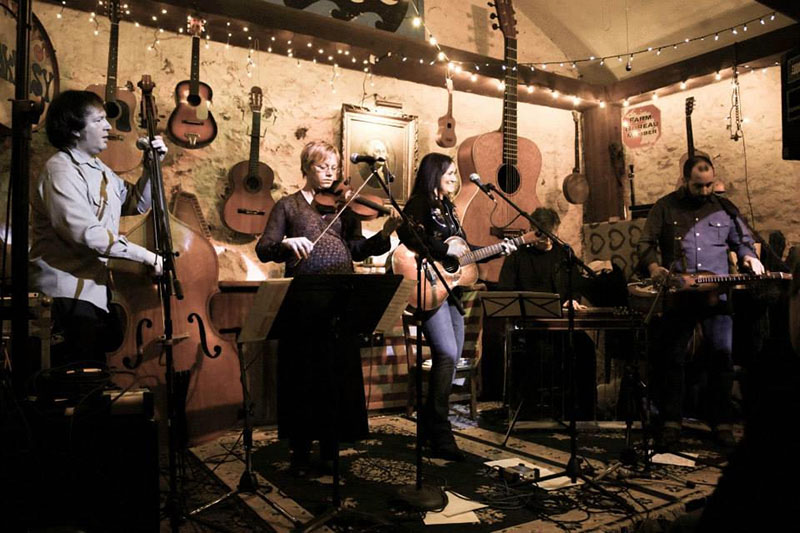
By day she's a therapist and the Executive Director of the local Center for Eating Disorders. But on more occasions lately, Judy Banker continues her ascent as one of the brightest stars on the acoustic music scene, writing her own songs, playing exuberant music on her guitar, and vocalizing lyrics that have a universal appeal.
It’s no stretch to say that Judy Banker is ultimately so happy when performing it all seems completely natural. Her enthusiasm and sheer elation while playing her music is infectious and evident. Her radiant smile and stage presence has made her popular, leaving her fans and admirers asking for more. She possesses that rare combination of charisma and charm, along with a healthy injection of musicianship that seems so organic and soul driven, not produced in any way, shape or form.
At the last three editions of Nash Bash in the Kerrytown Farmer’s Market, Banker has been a shining star, eliciting the remark from Kerrytown Concert House’s Deanna Relyea that she “now can’t imagine a Nash Bash without Judy Banker.” Singing as a member of the Bill Edwards group for a scant few years as she did at the recent Nash Bash, but also extensive time working with Jay Stielstra, she’s now become a leader in her own right with encouragement from Stielstra and friends who recognize her singularly unique talent and stage presence.
Making her way from her native Manitowoc, Wisconsin west of Milwaukee to Ann Arbor, Banker is living proof that life’s lessons and feeling one’s own share of personal blues can turn into positive messages and the kind of music anyone can relate to - no matter their lot in this human condition of America. Inspired by similar artists of the 1960s, Banker writes songs with a more creatively complex vision, yet with simple and easy to understand lyrics. She’s already written several that could be considered classics, like the tune prompted by a comment from her son, the title track on her debut CD Devils Don’t Cry, “If You Could Read My Mind” (not the Gordon Lightfoot hit), “Feet Of Clay,” and the deeply poignant “Regrets." Devils Don’t Cry is a complete compendium of the twists and turns anyone might face, turned into a delightful and at times heart-weary mix of cautionary tales and tonics for the troops. The initial CD could perhaps see a follow-up soon - she has more material laying in wait - but her first effort could easily be issued on any major folk music label. It’s that good.
Banker's support group is perfect for what she attempts and accomplishes as an artist. The band includes renowned slap bassist and vocalist David Roof, violinist/vocalist Greta Mae Barnard, lap steel, dobro, and slide guitarist Tony Pace, and drummer/percussionist Stuart Tucker.
Initially Influenced by the likes of The Beatles, Bob Dylan, Peter, Paul & Mary, Joan Baez and Joni Mitchell, Banker’s music is neither stern nor ethereal, yet she retains threads of some of those values, along with a heart that professionally and musically wants wrongs to be righted. She is also not strictly urban or rural, but takes in elements of simplicity and sophistication to make music that is clearly all her own.
In a recent interview, Judy Banker talked about the inspiration behind her personalized story/songs. “I want to express this complex of emotions in a thought. It’s continually fascinating to me how right and wrong are so hard to decipher - it’s all a point of view. It isn’t really hard to pick a subject. I will look back on something that I’m stuck on or can’t figure out."
As a player, she started on a cheap guitar, and, along with her older brother, took lessons. “We played piano as kids. We learned chords in the key of C and G, then our teacher said that was all he knew. Then we had a cover band in middle school.” She also mentioned Joni Mitchell and had all of her albums: “Her writing is incredible, but I didn’t play her songs because I didn’t know the chords. It was outside of my Mel Bay music book. Some of my melodies have that feeling."
When asked where her songwriting can go she admits this is an early foray, as she’s been doing it for only four years. “What I imagine - the area that I’ll branch off into - is working on other people’s stories more. I hear people’s stories all the time - the battles that women go through all the time. I haven’t written anything political or about disenfranchised groups. I wouldn’t rule that out, it’s something I’m passionate about and care about - people who are being battered by our culture."
Banker is delighted with her audience response, feeds off it, and is interested in taking it to a higher level. Once again, her happiness quotient on stage is shared with her listeners. “I would love to channel bringing joy to people’s lives in a substantial way instead of, say, buying them a new toy. Helping people clear out some of the gunk and have better lives - I’ve dedicated my whole life to that."
Michael G. Nastos is known as a veteran radio broadcaster, local music journalist, and event promoter/producer. He is a former music director and current super sub on 88.3 WCBN-FM Ann Arbor, founding member of SEMJA, the Southeastern Michigan Jazz Association, Board of Directors member of the Michigan Jazz Festival, votes in the annual Detroit Music Awards and Down Beat Magazine, NPR Music and El Intruso Critics Polls, and writes monthly for Hot House Magazine in New York City.
The Judy Banker Band performs at 7:30 pm on Thursday, October 6 at Johnny’s Speakeasy, 2923 Dexter Ave. on Ann Arbor’s far west side. E-mail only for reservations at johnnyspeakez@gmail.com. Seating is limited. The neighborhood has little if any local parking, so promoters are providing a shuttle between Plum Market in the Westgate Shopping area and The Speakeasy to easily access the show. Board from 6:30-7 pm. E-mail a reservation for the shuttle at judithbanker@gmail .com.
Review: "Mr. Joy" at Theatre Nova
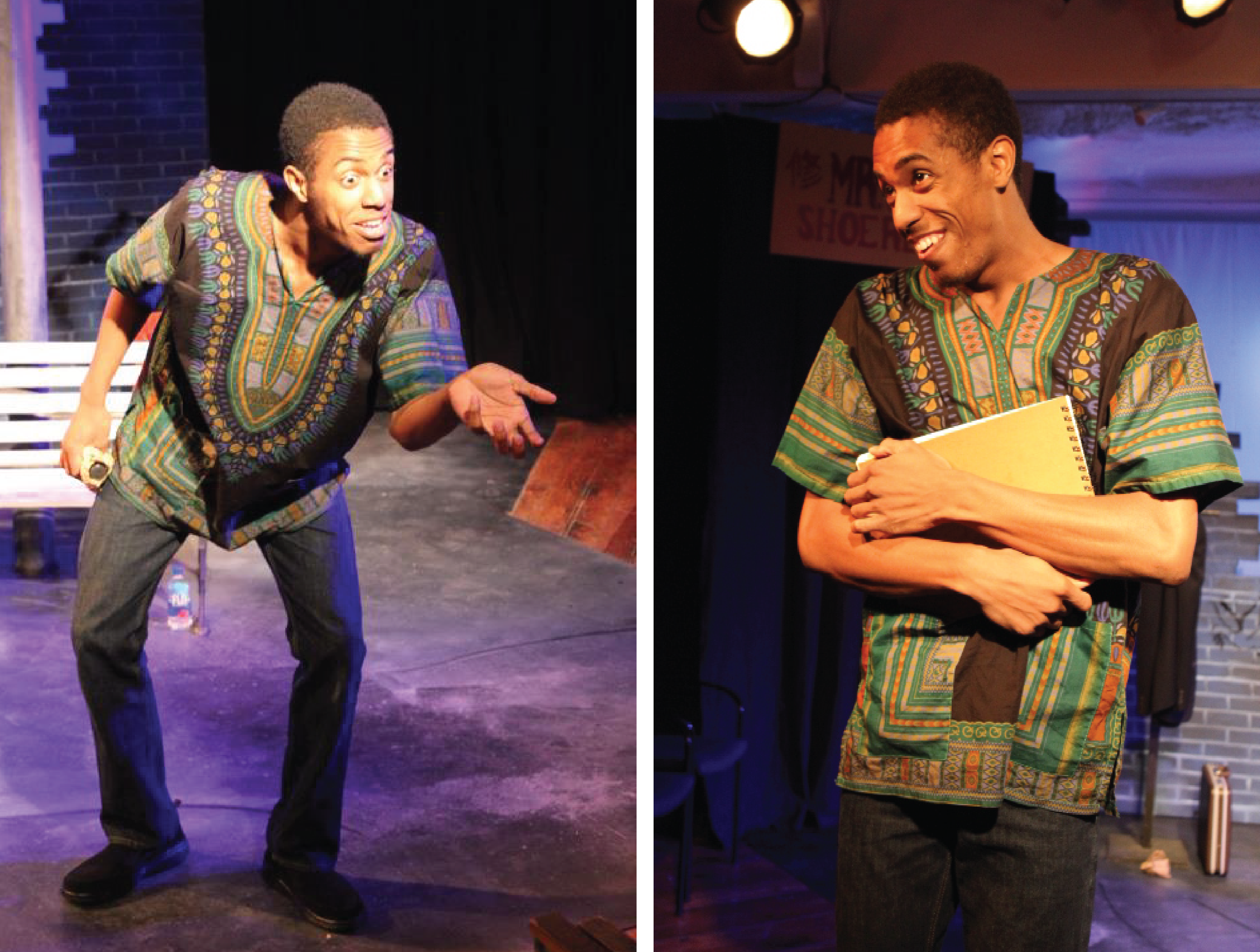
While watching Daniel Beaty’s play Mr. Joy at Theatre Nova, I immediately thought of Yong Kim, the owner of Mary’s Fabulous Chicken and Fish in Ann Arbor, who was robbed and brutally beaten with a plastic milk crate while walking to his car from the restaurant in 2014. Kim was 74 at the time of his attack, and the assailants turned out to be two teenage boys.
According to press reports, Kim managed to do something many of us would struggle mightily to do: he forgave his attackers.
Mr. Joy tells a similar story, through the prism of one actor playing several characters. In the play, longtime Harlem shoe repair shop owner Mr. Kim is robbed and beaten one night, but he won’t tell the police who his attacker was. And while Mr. Joy is the play’s nucleus, we never actually see him. Instead, we hear perspectives from those whose lives he’s touched: a homeless former painter; an 11 year old girl from the projects with AIDS, Clarissa, who considers herself his apprentice; Clarissa’s feisty grandmother; Clarissa’s schoolyard boyfriend, Peter; a young poet, DeShawn, who finds hope at church; Mr. Joy’s Ivy League-educated, real estate dealer son; the son’s rich, black Republican boss; the boss’ white girlfriend, who yearns for a child; and the boss’ transgender, flight attendant daughter, Ashes.
The hands-down best thing about Mr. Joy is seeing actor Matthew Webb embody each of the play’s characters with tremendous focus, care, and zeal. With an assist from director Billicia Hines’ guiding hand, Webb uses minimal costume changes and props – a notebook, a blazer and briefcase, a pair of red pumps, etc. – and efficient physical cues, like posture and gait, in addition to vocal inflection, to delineate the transitions between characters, and the effect is powerful. Despite the number of characters, and despite a couple of them earning a tenuous-at-best place in the narrative, Theatre Nova’s production never lacks clarity, and Webb’s performance is truly gripping to behold. (Those who previously saw the actor perform in TN’s I and Thou will leave Mr. Joy a much deeper appreciation for his talents and versatility.)
That said, Beaty’s play itself doesn’t provide much that’s bracing or new or thought-provoking regarding our ongoing national discussion of race, class, and inequality in America. Yes, there are moments of both sweetness and pain in the show; and DeShawn, in one scene, performs an impassioned performance poem that taps into the rage and fear and frustration of the community.
But we also hear familiar banalities from Grandma Bessie about faith, and how important it is to make the effort to talk to people; we see a character who will forever define himself by his own worst act – yet it’s hard to believe he even committed the crime, based on the short glimpses we’re shown of him, so the play’s “big reveal” feels instead like an unsatisfying, unearned authorial shortcut.
And finally, we have a politically conservative black man’s self-imposed estrangement from his child, born a son, because he chooses to undergo surgery to become a woman. This level of emotional complexity demands a play unto itself, frankly, in order to really dig into the issues involved; getting the drive-by version inevitably falls short.
Set designer Kelsey Nowak keeps things simple, with a busted brick wall backdrop (in front of a screen for occasional projections), a bench, milk cartons, a stool, a coat stand, a store sign, and a raised corner for Mr. Joy’s regular customers to leave shoes as a kind of prayer for his recovery. Daniel C. Walker lights the show beautifully, signaling character and mood transitions. And costume designer Carla Milarch (who also designed the show’s sound) found clothes that were neutral, but also wholly appropriate, for Webb to wear as he navigates between a broad variety of characters.
I’ll confess Theatre Nova’s design elements, paired with Webb’s powerhouse performance, had me seduced as the lights came up; but the more I thought (and wrote) about the play, the more I couldn’t overlook the script’s shortcomings. For unlike Ta-Nehisi Coates’ invigorating, harrowing, brutally honest book Between the World and Me – a letter to Coates’ son about growing up as an endangered black man in America – Mr. Joy never takes the risks necessary to push us into new, uncharted territory in regard to talking about race; and that’s precisely where we need to go if anything’s going to change.
Jenn McKee is a former staff arts reporter for The Ann Arbor News, where she primarily covered theater and film events, and also wrote general features and occasional articles on books and music.
Mr. Joy runs through October 23 at the Yellow Barn, 410 W Huron St, Ann Arbor. Visit https://www.artful.ly/theatre-nova/store/events for tickets.


































